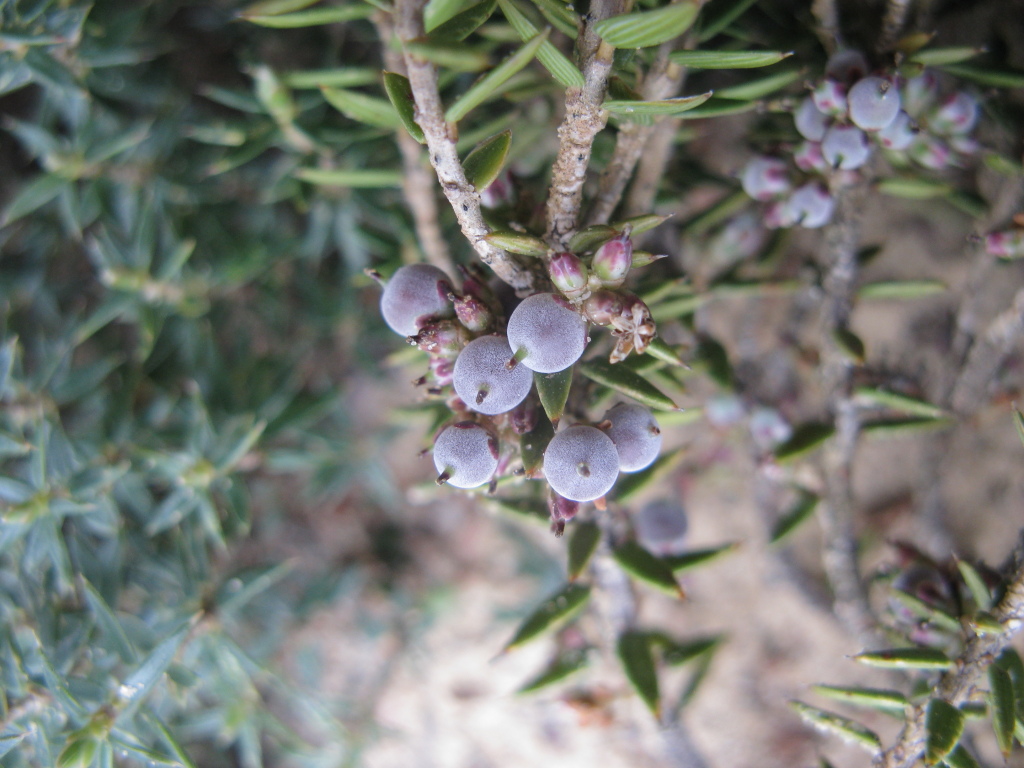Acrotriche affinis
DC. Ridged Ground-berryMuch-branched shrub to c. 30(–60) cm high; branchlets puberulent. Leaves spreading or reflexed, broadly lanceolate, 3–11 mm long, 1.3–2.5 mm wide, mucronate, flat to convex, glabrous, or scabrous above towards base, lower surface paler with 5–9 broad unbranched subparallel veins separated by narrow, deep grooves; margins plane to slightly recurved, smooth to scabrous-ciliolate. Flowers in 4–10-flowered spikes, on previous season's or older wood; spike c. 2–7 mm long; bracteoles 1–1.6 mm long; sepals 1.6–2.5 mm long; corolla sometimes maroon-tinged; tube 2–4 mm long, inflated about the middle; lobes green, 1.5–2 mm long; ovary 4–6-locular, densely and minutely white-papillose, style 0.7–1.3 mm long. Fruit globose, c. 3–4 mm long, white, indumentum persisting. Flowers Jun.–Oct.
LoM, MuM, Wim, GleP, Brid, GipP, OtP, WaP, GGr, WPro, OtR. Also SA, Tas. Disjunctly distributed in Victoria-in calcareous, near coastal areas west of Wilsons Promontory and on sand plains and between dunes of the Big Desert, occurring in a range of communities including coastal scrub, woodland, mallee shrubland or heathland.
Acrotriche affinis closely resembles A. serrulata. In addition to the features used in the key, A. affinis tends to have broader, more glossy leaves, glabrous sepals, white fruit and occurs in different habitats.
Albrecht, D.E. (1996). Epacridaceae. In: Walsh, N.G.; Entwisle, T.J., Flora of Victoria Vol. 3, Dicotyledons Winteraceae to Myrtaceae, pp. 464–509. Inkata Press, Melbourne.
 Spinning
Spinning
